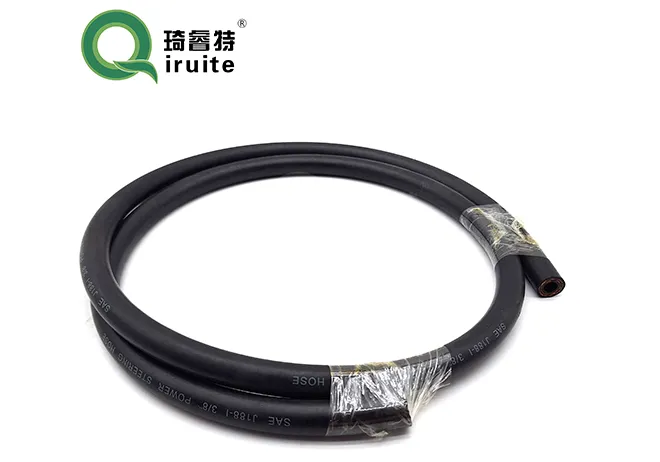Subaru Forester Power Steering Hose Replacement Guide and Tips for Maintenance
Understanding the Subaru Forester Power Steering Hose Importance, Maintenance, and Replacement
The Subaru Forester, known for its exceptional reliability and versatility, is a favorite among compact SUV enthusiasts. One critical component of this vehicle's performance is the power steering system, specifically the power steering hose. Understanding its function, maintenance needs, and replacement procedures can enhance your Forester's longevity and ensure a smooth driving experience.
The Role of the Power Steering Hose
The power steering hose is a vital component of the power steering system. It is responsible for transporting the hydraulic fluid from the power steering pump to the steering gear, allowing for easier maneuvering of the vehicle. In simpler terms, this hose is what enables drivers to turn the steering wheel with minimal effort. A properly functioning power steering system is crucial, especially for larger vehicles or those that frequently navigate tight spaces.
Common Issues with the Power Steering Hose
Over time, power steering hoses can experience wear and tear due to exposure to heat, pressure, and various environmental factors. One of the most common issues is leakage. A leaking power steering hose can lead to a decrease in hydraulic fluid levels, which can cause the steering system to fail, making steering difficult and potentially unsafe. Other symptoms of a failing power steering hose include low fluid levels, a whining noise when turning the steering wheel, or the steering becoming unresponsive or stiff.
Signs You Need Replacement
Identifying the signs of a failing power steering hose early is crucial. Here are a few indicators that you may need to replace your Subaru Forester's power steering hose
1. Fluid Leaks The most obvious sign is the presence of power steering fluid under your vehicle, often exhibiting a reddish hue. 2. Whining Noise If you hear a whining or groaning noise when turning the steering wheel, it may indicate that the power steering pump is struggling due to low fluid levels caused by a hose leak. 3. Difficult Steering If turning the wheel becomes stiff or unresponsive, it may be time to inspect the power steering hose for damage. 4. Warning Lights Some vehicles come equipped with warning lights that illuminate when there is a problem with the power steering system. Pay attention to these lights and consult your vehicle’s manual for guidance.
The Replacement Process
If you suspect that your power steering hose needs replacement, it’s advisable to take immediate action. While some experienced DIY enthusiasts may tackle this job at home, it’s often best left to a professional mechanic. However, here’s a general overview of the replacement process
subaru forester power steering hose

1. Safety First Ensure the vehicle is on a level surface, the engine is off, and the key is removed from the ignition. Engage the parking brake.
2. Access the Hose Depending on the model year and engine configuration of your Forester, you may need to remove other components to access the power steering hose.
3. Drain the Fluid Before removing the old hose, it’s essential to drain the power steering fluid from the system to avoid spillage.
4. Disconnect the Old Hose Carefully detach the old power steering hose from both the pump and the steering gear. Ensure to check the fittings for corrosion or damage.
5. Install the New Hose Attach the new power steering hose, ensuring that it is securely fastened and there are no kinks that could impede fluid flow.
6. Refill the Fluid Once the new hose is in place, refill the power steering fluid as necessary.
7. Test the System Start the vehicle and turn the steering wheel from lock to lock to circulate the fluid and eliminate any air pockets in the system. Check for any leaks around the new hose fittings.
Maintenance Tips
To prolong the life of your Subaru Forester’s power steering hose, regular maintenance is essential. Check the power steering fluid levels periodically and top them off as needed. Inspect the hose and connections for any signs of wear or leakage. Additionally, consider having the power steering system flushed and refilled periodically as part of routine maintenance.
In conclusion, the power steering hose plays a crucial role in ensuring that your Subaru Forester remains easy to handle and responsive. By being aware of its function, potential issues, and the importance of maintenance, you can keep your vehicle operating at its best for years to come.
-
Ultimate Spiral Protection for Hoses & CablesNewsJun.26,2025
-
The Ultimate Quick-Connect Solutions for Every NeedNewsJun.26,2025
-
SAE J1401 Brake Hose: Reliable Choice for Safe BrakingNewsJun.26,2025
-
Reliable J2064 A/C Hoses for Real-World Cooling NeedsNewsJun.26,2025
-
Heavy-Duty Sewer Jetting Hoses Built to LastNewsJun.26,2025
-
Fix Power Steering Tube Leaks Fast – Durable & Affordable SolutionNewsJun.26,2025

